
KANDAHAR: THE PASHTUN HEARTLAND
Exploring Life in the Centre of Pashtun Afghanistan
KANDAHAR, AFGHANISTAN
Kandahar, like most of Afghanistan, is only seen from a limited perspective to the eyes of the world. It has been portrayed as the birthplace of the Taliban, where Mullah Omar prayed with Osama Bin Laden. It is often portrayed as the fiercest of battlegrounds, where U.S. and NATO forces patrol villages for battle-hardened men with long beards and black turbans. It is one of the most conservative cities for Afghan women, who have the most to lose with a takeover.
But there’s another, often unseen side to Afghanistan’s second-largest city and its surrounding province. Set against both desert and mountains, the area is a political and cultural hub for the country’s south extending back over a history of 2000 years. It is one of the most culturally significant cities of ethnic Pashtuns and a birthplace of kings to the entire country.
On hot quiet evenings, people will line the streets, sipping chai and chatting over roadside picnics. Despite the continued Taliban presence just outside its walls, the people try their best to live their everyday lives, even under constant, unnerving fear. They pray in the city’s ornate mosques; young children study in schools, both secular and Quranic, and citizens peruse chaotic bazaars.

Shrine of the Cloak
Kandahar, Afghanistan. May 2021.
The Kirka Sharif, otherwise known as the Shrine of the Cloak, is one of the most significant historical sites in Kandahar. The mosque houses a cloak believed to be the cloak of Prophet Mohammed, which he wore during the Night Journey in the year 621. The cloak itself is locked away inside the mosque and is rarely seen.
It has been guarded by the same family for over 250 years and has been traditionally shown only to recognized leaders of Afghanistan. In 1996, Taliban leader Mullah Omar was given access to the cloak by the shrine’s then guardian, where he held it out to crowds as they chanted "Amir al-Mu'minin,” Commander of the Faithful. The last time it was seen in public was in 2018 when President Ashraf Ghani opened the box of the cloak, to pray for peace during a three-day Eid ceasefire.
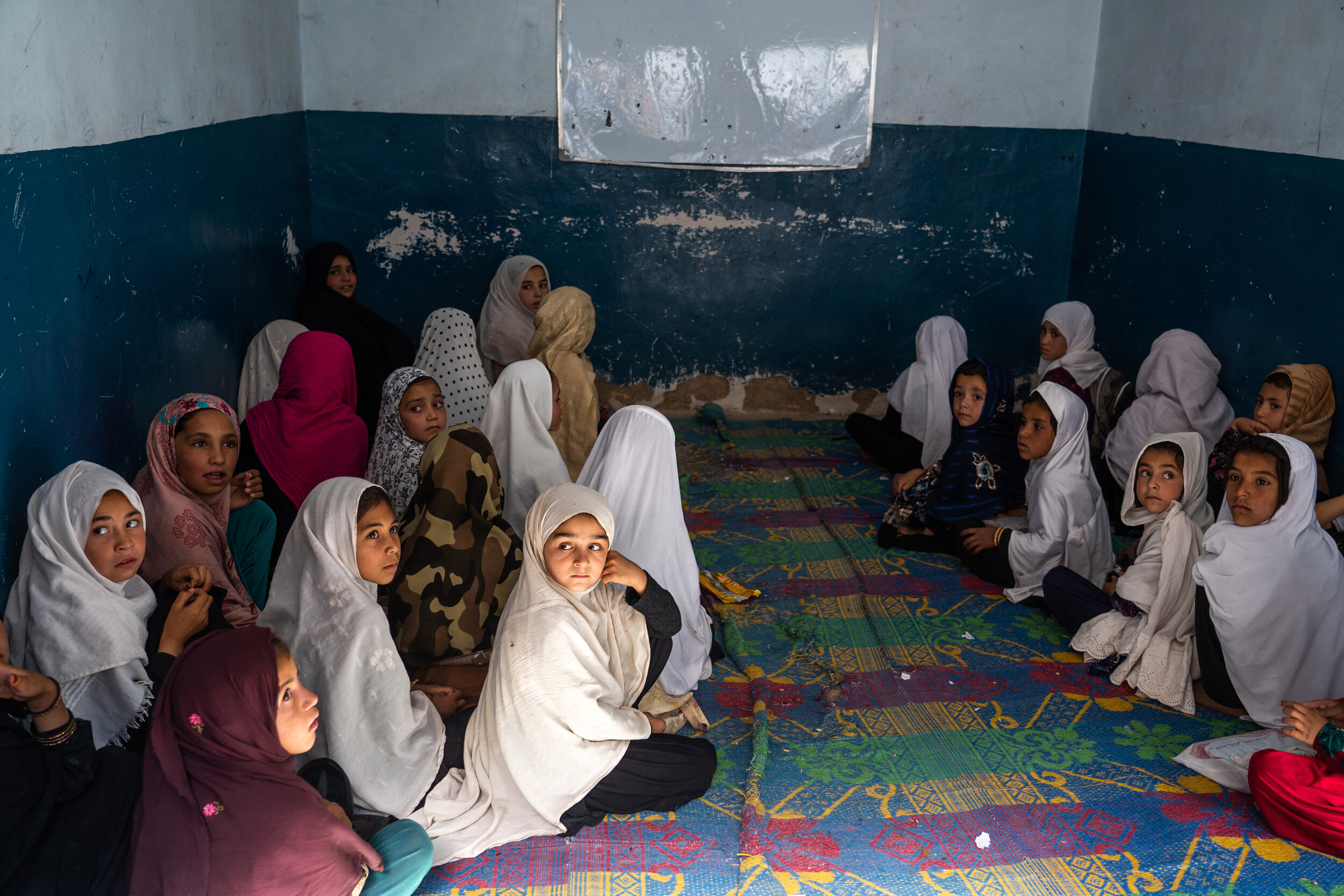
The Girls’ Room
Kandahar, Afghanistan. May 2021.
Madrassas are schools devoted primarily to religious instruction. A small single room of the Tajala Daralhefaz Madrassa is dedicated to girls’ religious education. In the compact school of around 200 students, there are only a small handful of girls. Here, under the guidance of male religious teachers, mullahs, girls are taught how to read and memorize passages from the Quran.
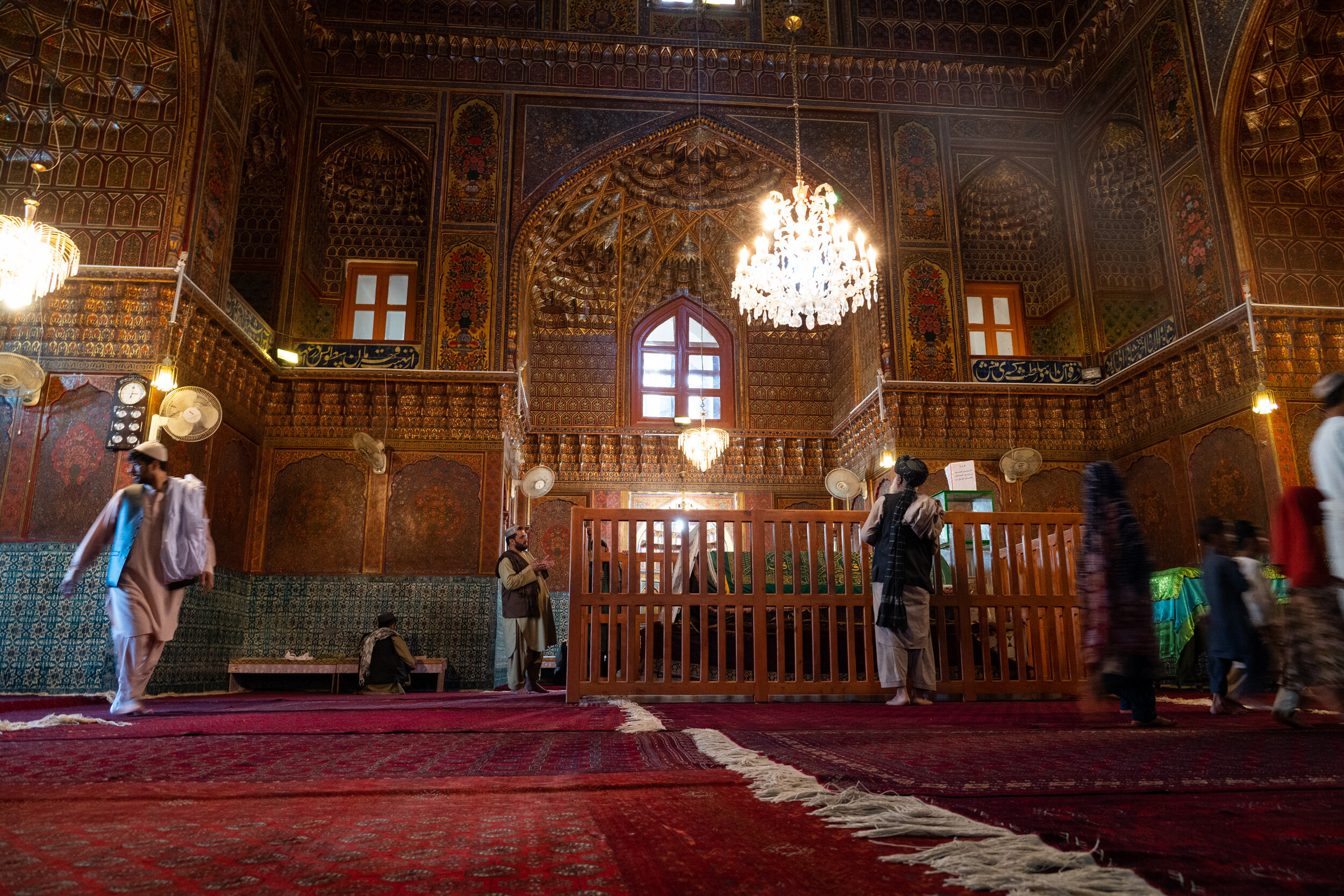
Holy Day in the Shrine
Kandahar, Afghanistan. May 2021.
Ahmad Shah Durrani is regarded as the founder of the modern state of Afghanistan. In 1747, Durrani was appointed as the King of Afghanistan by a loya jirga or local assembly in Kandahar, where he set up his capital. His legacy is important to southern Afghanistan’s Pashtun people, as they see him as both a holy figure and grandfather. On Fridays, many Pashtuns come to pray inside his ornate tomb, located in the same complex as the Shrine of the Cloak and the Friday Mosque.
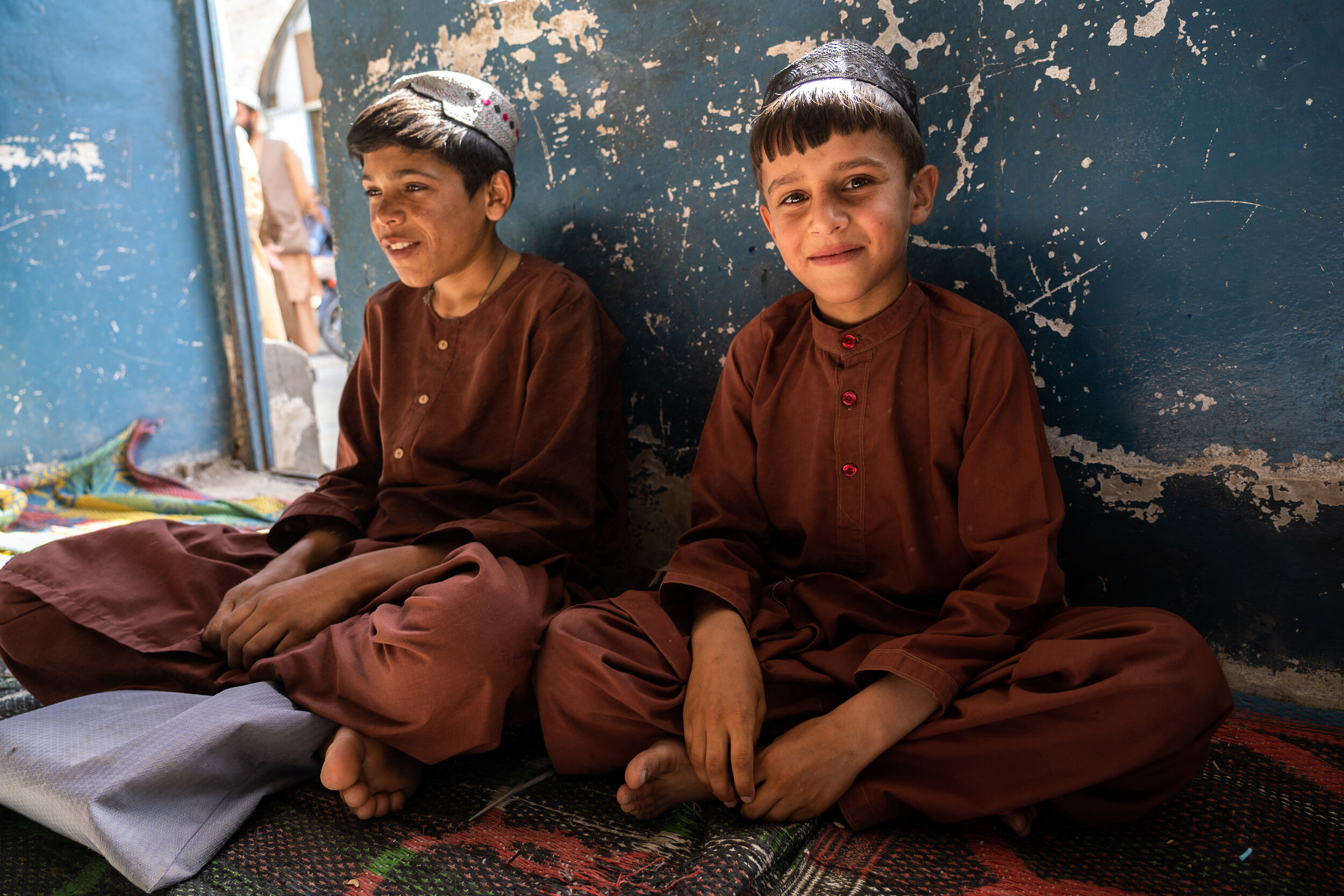
Boys in the Classroom
Kandahar, Afghanistan. May 2021.
These young boys study at Tajala Daralhefaz Madrassa, one of Kandahar city’s government-run madrassas or religious schools. These Quranic study programs are inexpensive and often overcrowded. Classes run in the morning and evenings, breaking in the afternoon because of the overwhelming heat. They teach children how to read and memorize passages from the Quran.
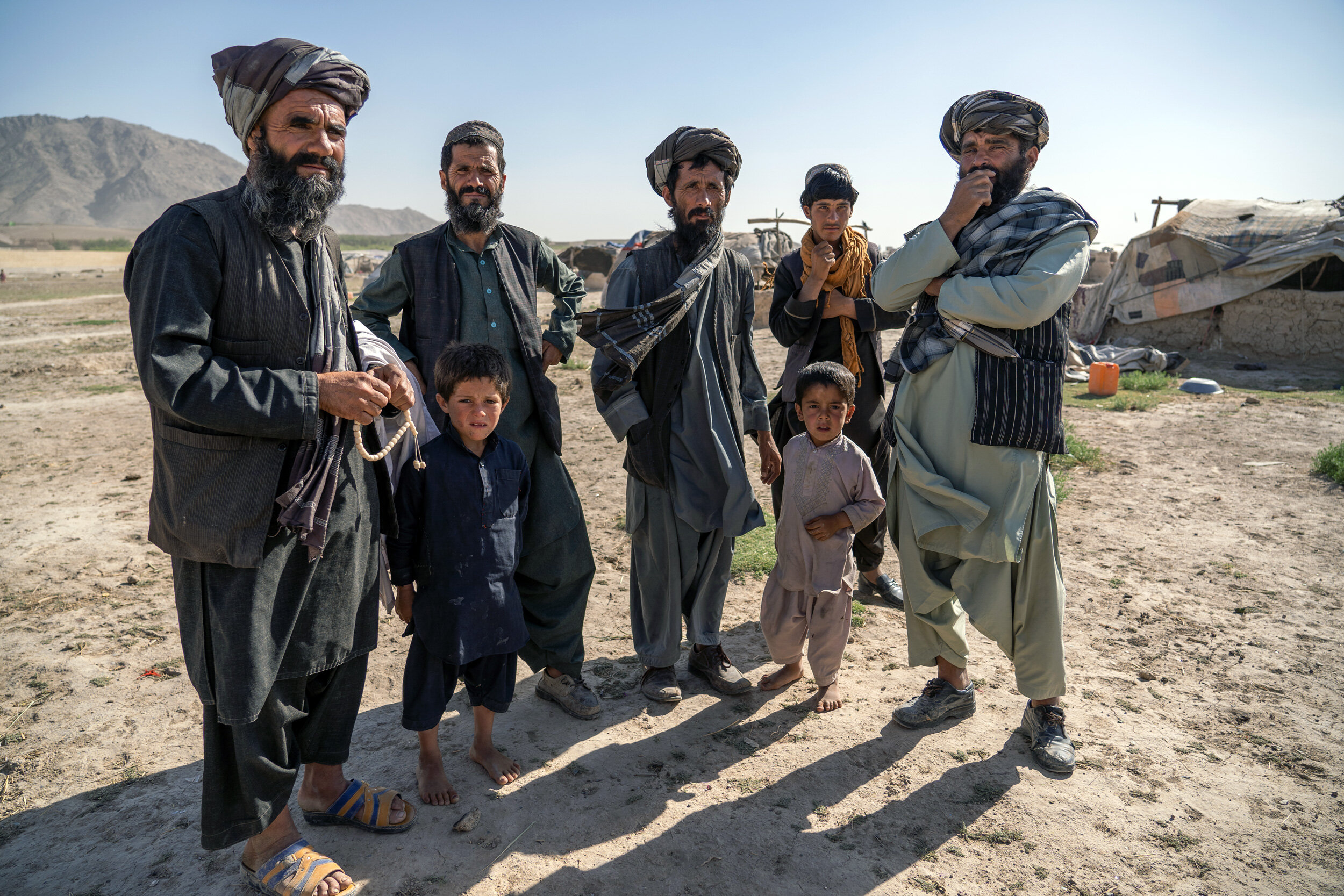
Stuck Nomads
Kandahar, Afghanistan. May 2021.
Due to the war, a particular group of Kochis has been stranded on a dry piece of land near the Kandahar airport for the past five years. They are unable to travel to their traditional grazing lands because of the conflict, so they squat along the outskirts of the city in about 50 nomad tents. Their children do not attend school, and the families live in extremely difficult conditions, with little access to food and water.
Water remains a major issue for their survival. They are unsure who owns the land, and are hesitant to build a water well for fear that they will be charged rent if its existence increases the desirability of the area. They walk five kilometers to the nearest village and back in scorching heat to retrieve water supplies.
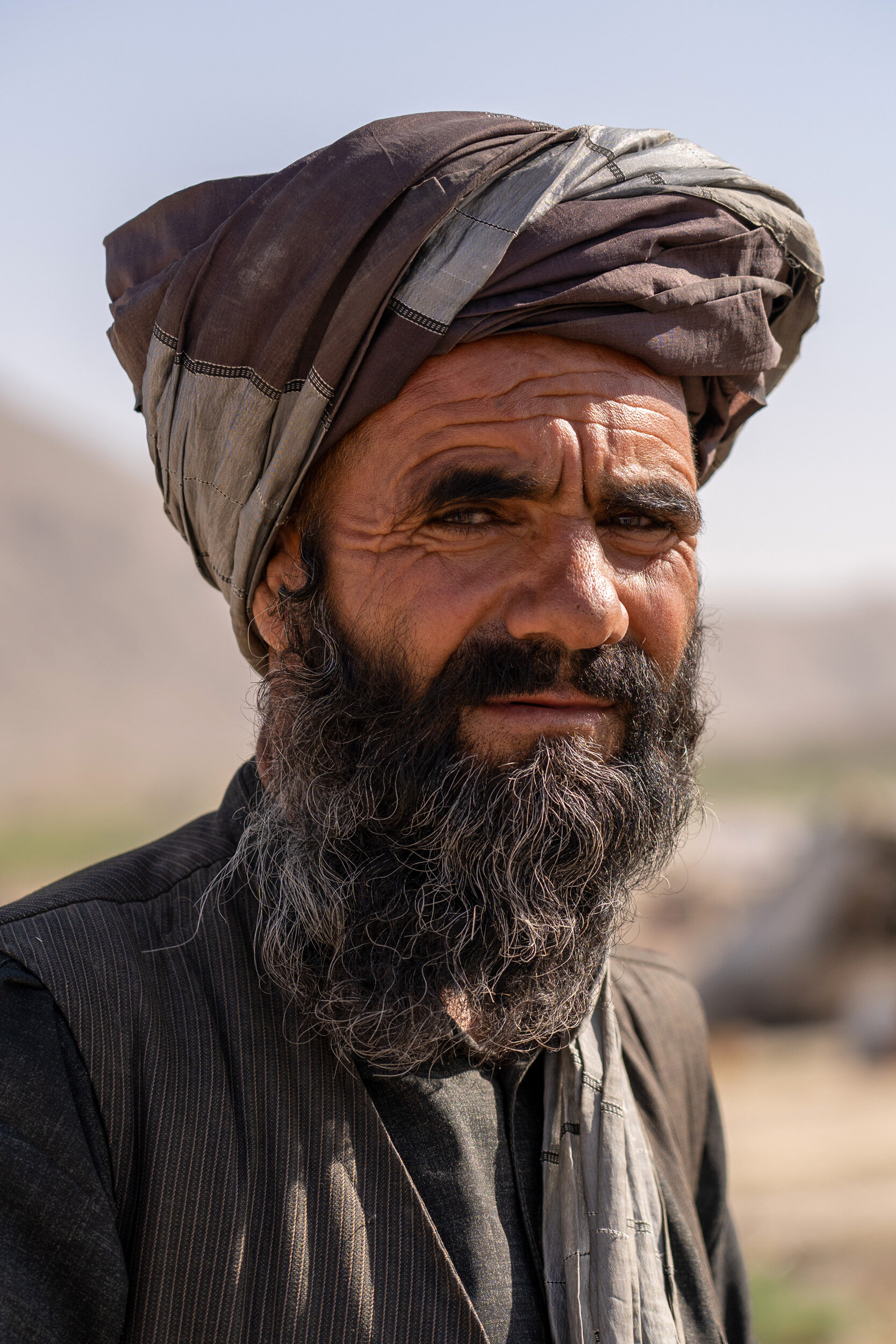
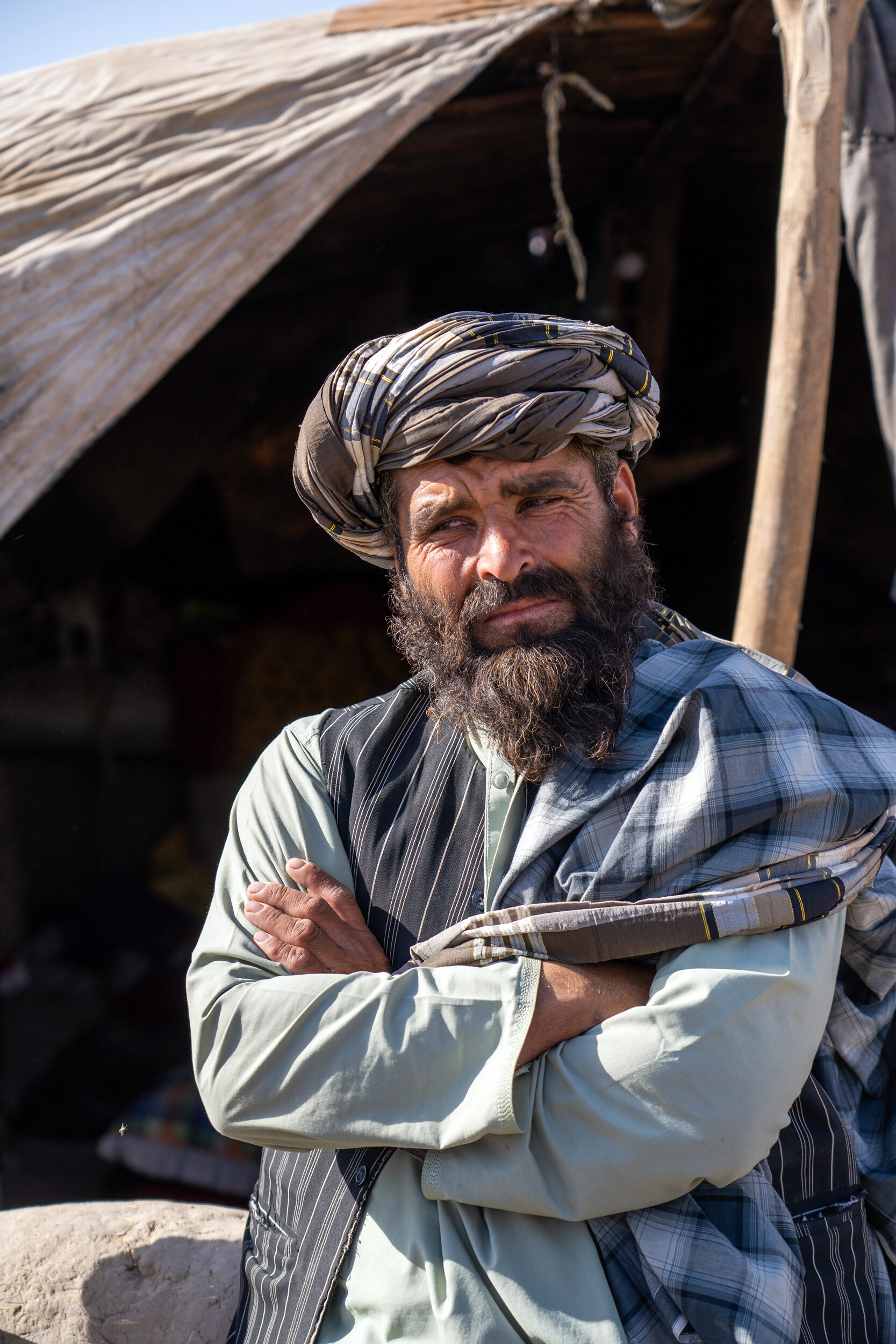
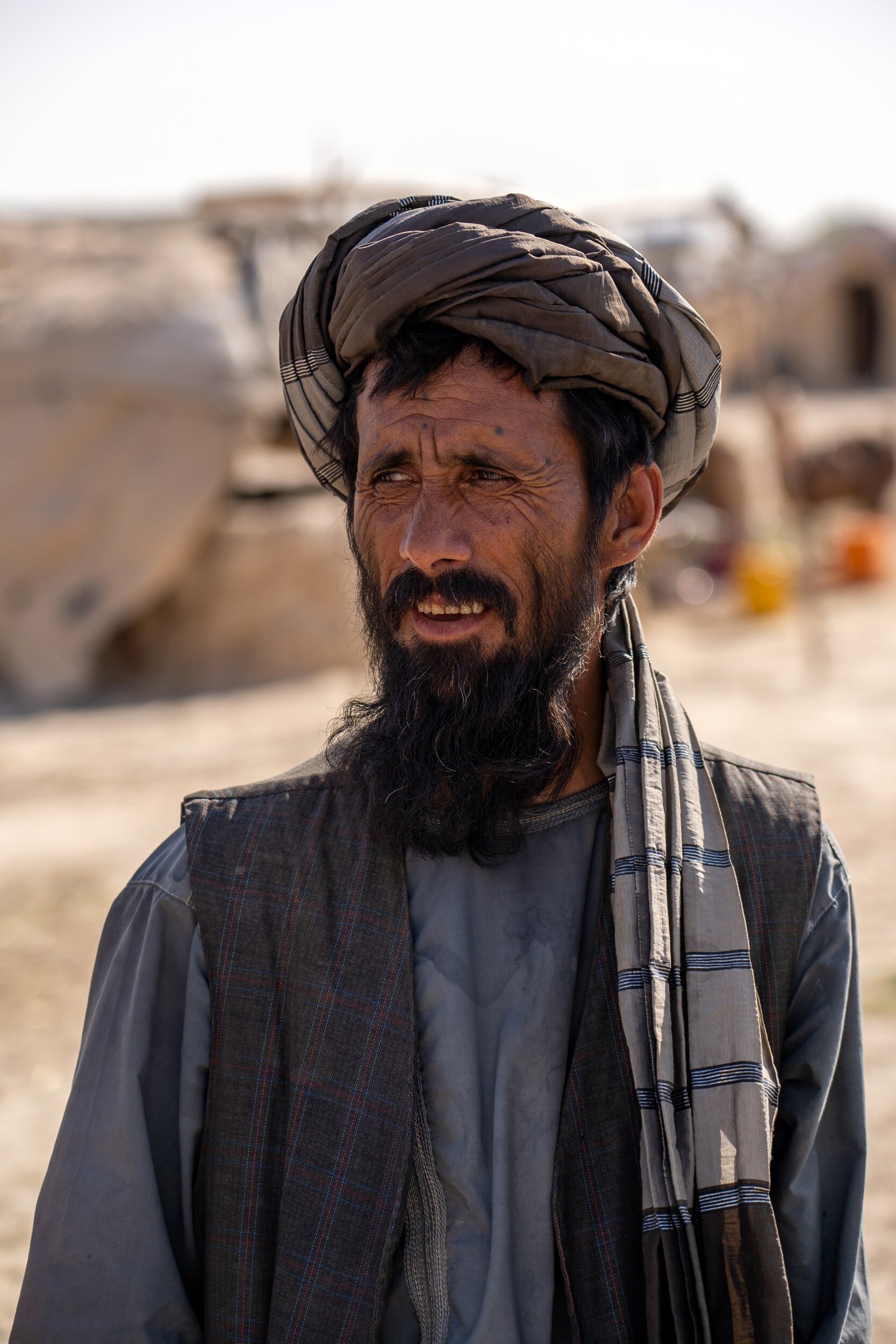
Kochi Portraits
Kandahar, Afghanistan. May 2021.
The Kochis are pastoral nomadic sheep herders from Afghanistan. Referred to as maldar in the Pashto dialect, they are considered to be a subgroup within the ethnic Pashtuns of the country’s south and east. Kochi herders regularly come into conflict with other groups in the country as they migrate in search of land to graze their animals.
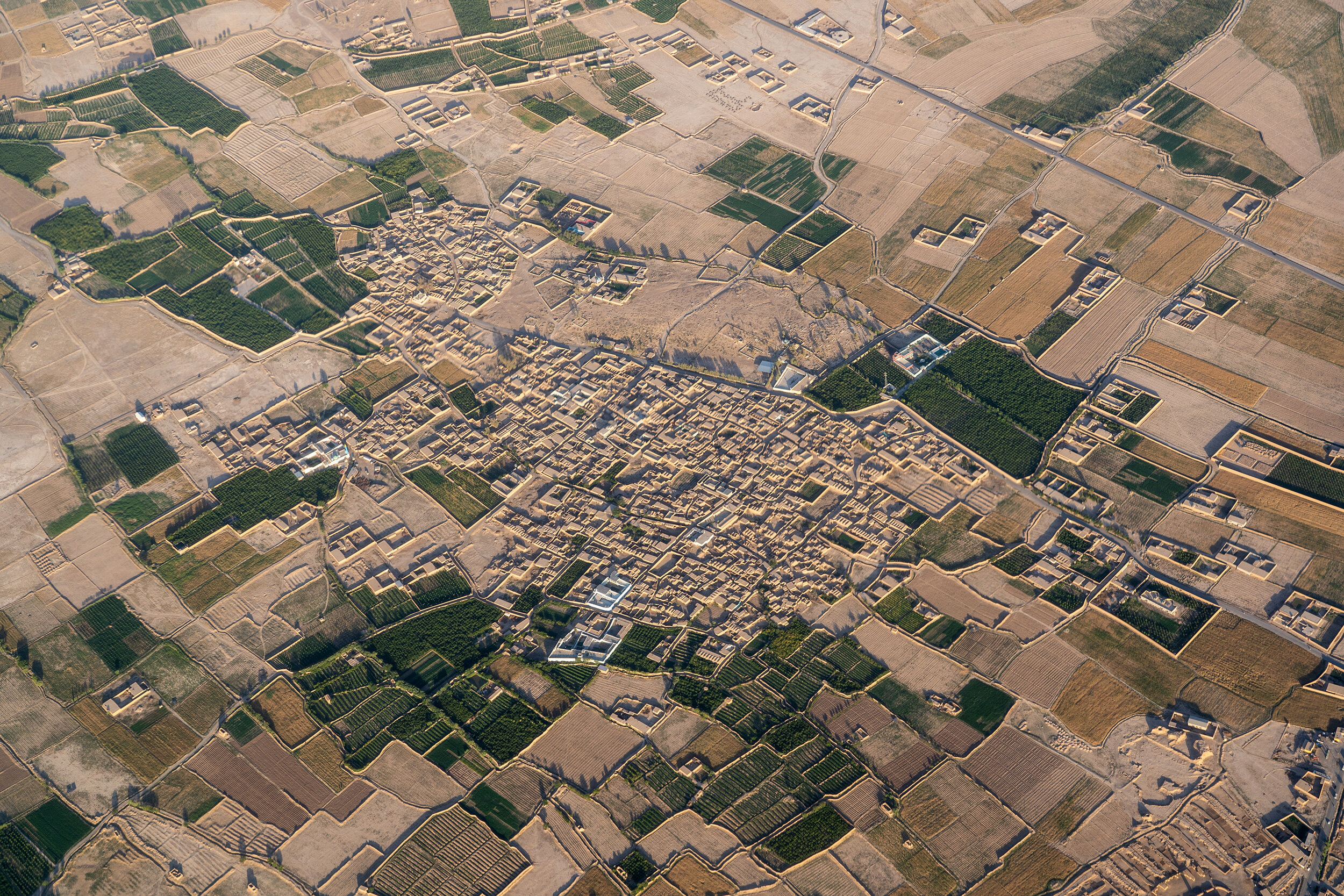
A Pashtun Village from the Sky
Kandahar, Afghanistan. May 2021.
Kandahar province contains around 18 districts, over 1,000 villages, and approximately 1.4 million people as of 2020. Its main innhabitants are ethnic Pashtuns and their main source of income is agriculture. Noticeable features of Pashtun villages include the high walls that surround each house.
These private compounds are designed to safeguard a family’s honour, a key element of the Pashtunwali, or Pashtun code of life. The privacy walls ensure the family’s women will remain unseen by outsiders, much like how traditional Pashtun women wear the all-encompassing chadri (or burqa) when outside the home.

Books in the Windows
Kandahar, Afghanistan. May 2021.
Young male students are seen here carrying the Quran. Government-run madrassas offer Afghan national curriculum - reading, writing (in Pashto, sometimes Dari), and arithmetic - in addition to Quranic studies. This is not the case with Taliban-run religious schools where children are exposed solely to Quranic instruction in Arabic and are fed a very hardline conservative interpretation of Islam.
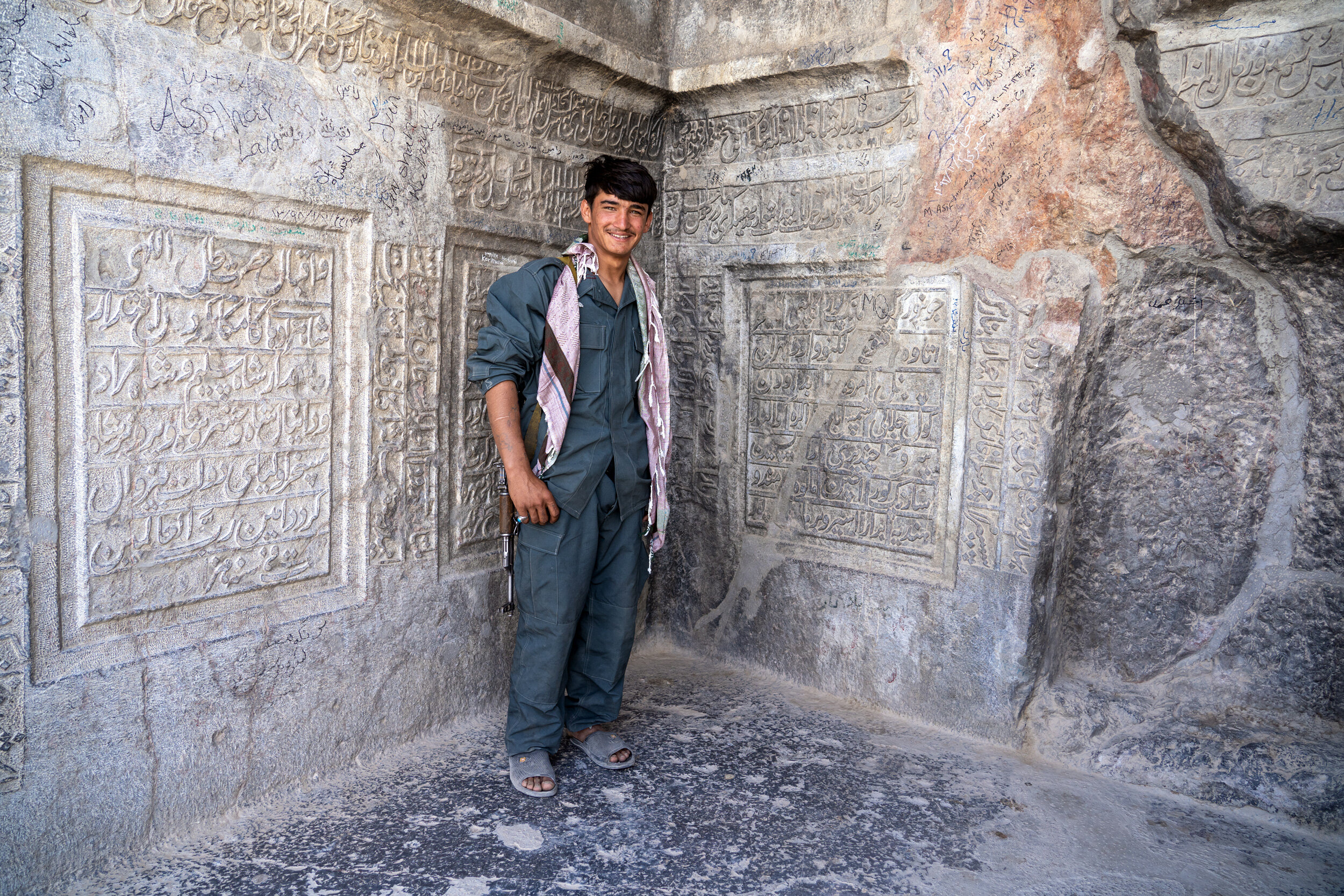
Chil Zena - The “Forty Steps” of Kandahar
Kandahar, Afghanistan. May 2021.
A soldier guards the top of Chil Zena, a mountainous rock formation located at the Western border of Kandahar city. It is named “Forty Steps” because there are forty stone steps leading to the top of the formation overlooking the city. The site is famous for inscriptions found at the top in Aramaic text by the Indian Emperor Ashoka. These inscriptions confirmed the presence of Greek populations in the area during the third century BCE, as well as Ashoka’s control over that area of Afghanistan.
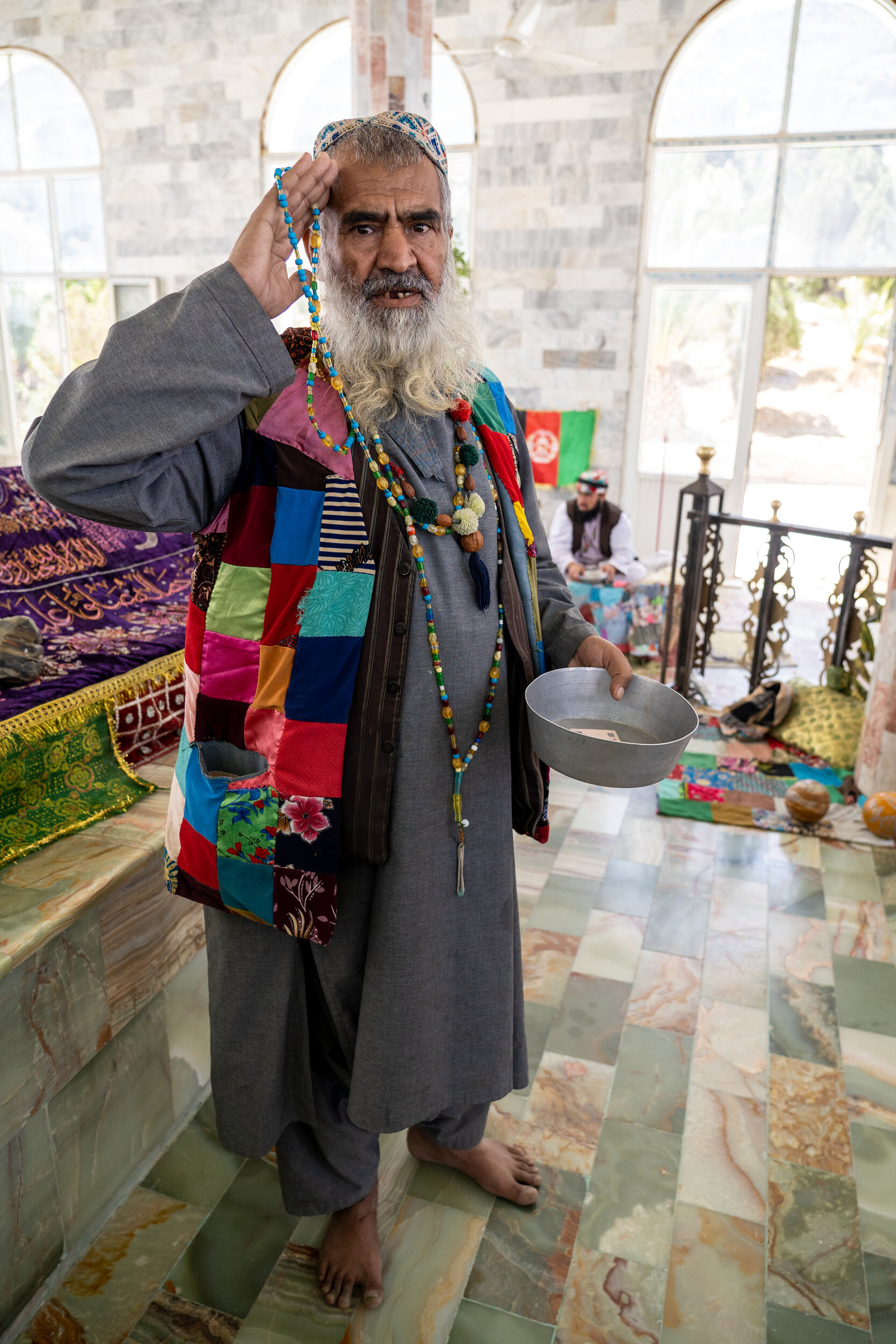
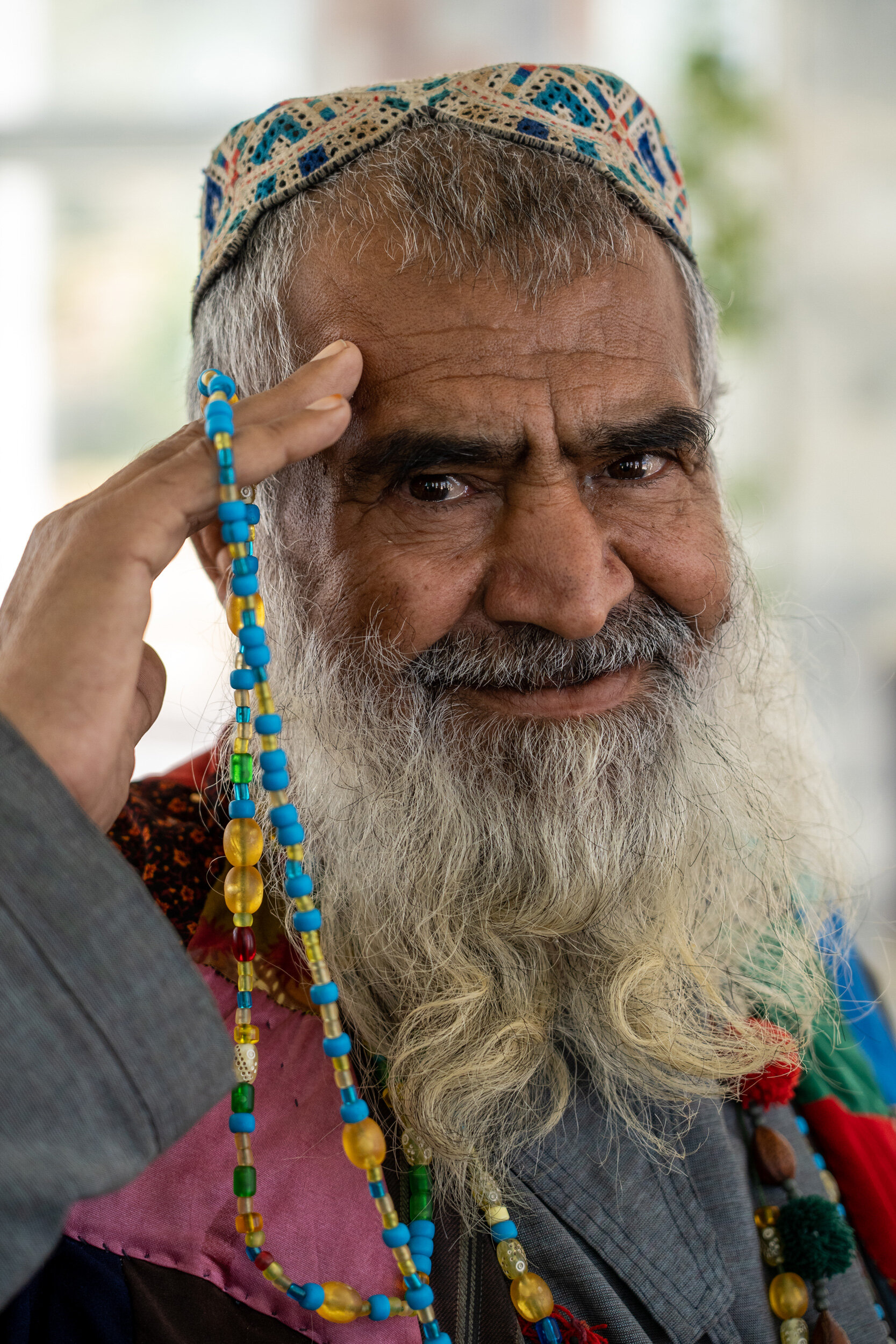
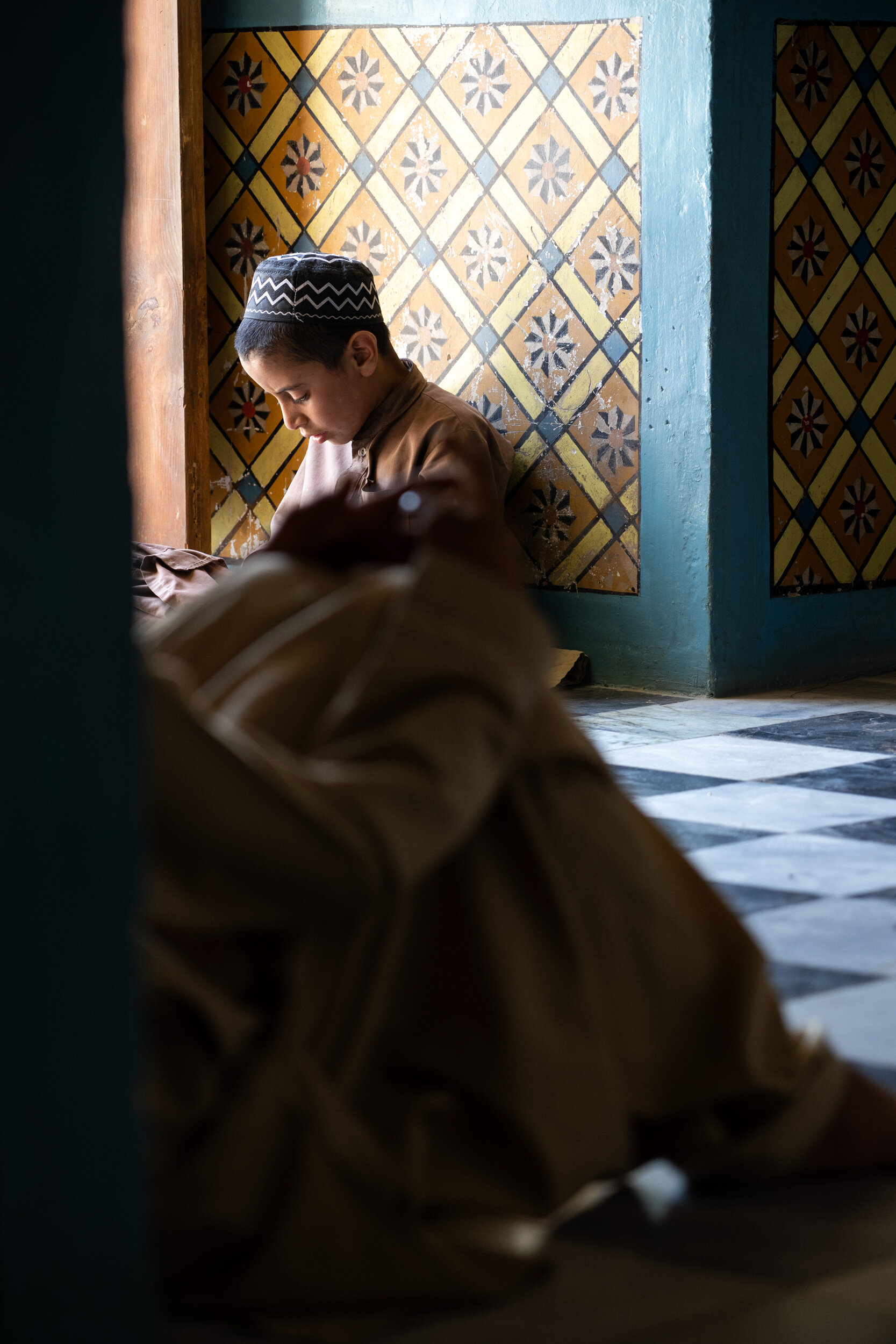
People Who Guard Shrines
Kandahar, Afghanistan. May 2021.
Top left two mages: This Salang is a lifelong guardian of the Baba Wali shrine, a multilevel marble tomb sitting on the banks of Arghandab River, only two kilometers away from the Taliban front line. He holds a basket asking for donations. The million-dollar shrine was constructed at the request of Gul Agha Sherzai, a twice-former Governor of Kandahar and former mujahideen commander to honours one of his fallen tribesmen. Because of its hillside location near the river, it is a popular picnic setting for Kandaharis in the evenings.
Top right image: Two boys sit in the entranceway to the Mirwais Nike shrine in Kandahar’s western suburbs. Mirwais was an influential Pashtun from Kandahar who was the founder of the Hotak dynasty that existed from 1709 to 1738. He is regarded as one of Afghanistan's greatest national heroes and admired by many Afghans, especially the Pashtuns, where he is seen as a George Washington-like figure. His tomb has become a place of reverence for locals.
